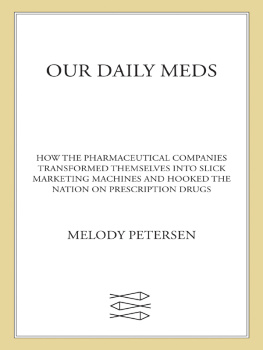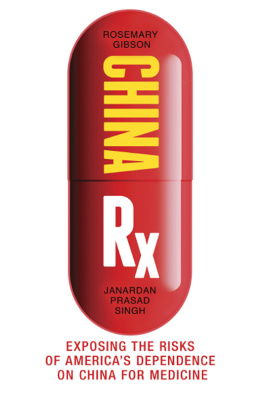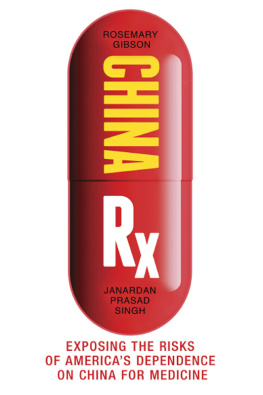Introduction
D OCTORS CALL IT the resurrection drug. They have watched as it freed patients from what seemed an inescapable death.
The medicine treats sleeping sickness, a disease far more lethal and terrifying than its name implies. Opportunistic tsetse flies spread the disease through much of Africa, devastating villages and killing tens of thousands of people a year. The jewel-eyed yellowish brown flies thrive in thickets along rivers where women and children go to collect water. With a bite, the bloodsuckers inject deadly parasites into their human victims. As the parasites multiply, their human hosts appear to go mad. The victims grow agitated and confused, slur their speech, and stumble. Finally come coma and death.
The pharmaceutical company that manufactured the medicine, a failed cancer drug with the tongue-twisting name eflornithine, abandoned it in 1995, seeing no profit in selling it in poor countries.
But the resurrection drug made its own revival a few years laternot in Africa, but in the United States, a land free of tsetse flies but with fourteen million women worried about unwanted facial hair. Another company began selling it in the form of a depilatory cream to minimize female mustaches. With its lavender-colored logo resembling a graceful swan and advertisements sporting young, beautiful models, eflornithine became another prescription drug marketing success.
The company christened its product Vaniqa.
T HIS IS A book about a great transformation in the prescription drug industry over the last twenty-five years. Once the most successful pharmaceutical companies were those with the brightest scientists searching for cures. Now the most profitable and powerful drugmakers are those with the most creative and aggressive marketers. The drug companies have become marketing machines, selling antidepressants like Paxil, pain pills like Celebrex, and heart medications like Lipitor with the same methods that Coca-Cola uses to sell Sprite and Procter & Gamble uses to sell Tide.
Selling prescription drugsrather than discovering themhas become the pharmaceutical industrys obsession.
Prescription drug marketing now permeates every corner of American societyfrom Sesame Street to nursing homes to the nightly news. Medicine ads sprout from billboards, scoreboards, the hoods of race cars, and the back covers of magazinesall once venues of the similarly ubiquitous cigarette ads of the 1960s and 1970s. Imitating neighborhood grocers, the drugmakers offer coupons, free gifts, and deals to buy six prescriptions and get one free. They hold sweepstakes and scholarship contests. They pay to sponsor rock concerts, movie premieres, and baseballs major leagues.
The marketers make the use of their dangerous medicines look attractive and easy. Fentanyl, an addictive narcotic eighty times more potent than morphine, comes in a berry-flavored lollipop. Syringes used to inject children with growth hormone look like kaleidoscope-colored writing pens and PlaySkool toys. In 2006 drug companies gained approval to coat their pills with pearlescent pigments to enhance them with a shimmery satin luster and make them look as precious as their price.
During New Yorks 2003 Fashion Week, swimsuit models shimmied down the catwalk, showing off Johnson & Johnsons new contraceptive, a white-colored patch that was glued to the skin. By wearing the drug as a fashion accessory, one company executive explained, women can look beautiful and feel confident.
Men attending professional golf tournaments in 2004 heard a different pitch. Step right up for free tips on your golf game, offered marketers working in a tent promoting Cialis, a drug for erectile dysfunction. Step right up for a free video lesson from a sports psychologist, the salesmen invited. By the way, they added, do we have the perfect drug for you!
America has become the worlds greatest medicine show.
The marketing works. Never have Americans taken so many prescription drugs.
Americans spent $250 billion in 2005 on prescription drugs, more than the combined gross domestic product of Argentina and Peru. Americans spent more on prescription drugs in 2004 than they did on gasoline or fast food. They paid twice as much for their prescription medicines that year as they spent on either higher education or new automobiles.
The American prescription drug market is so lucrative that many foreign drug companies have moved in and now depend on Americans for most of their profits. For foreign executives, the math is simple. Americans spend more on medicines than do all the people of Japan, Germany, France, Italy, Spain, the United Kingdom, Australia, New Zealand, Canada, Mexico, Brazil, and Argentina combined .
As the medicine merchants have poured billions of dollars into selling their wares, they have become Americas most powerful industry. In the process, they have transformed American life. The small white-capped whiskey-colored bottles that once took up a corner of the bathroom cabinet now play a role in lives that few products can match. Almost 65 percent of the nation now takes a drug available only by prescription. Children line up in the dining hall of their summer camps to get their daily doses. Pharmacies stay open twenty-four hours to meet Americas demand. Even the dogs get Prozac if they howl too much at the moon.
The pharmaceutical companies build their laboratories on the campuses of public universities. They recruit patients for clinical trials at shopping malls and county fairs. On network television, the plots of prime-time shows revolve around brand name prescription drugs, at times at the suggestion of marketers at a pharmaceutical company.
The medicine promoters have turned what were once normal life eventsmenopause, despair from a divorce, anxiety caused by a workaholic bossinto maladies that can be treated with a pill. After all, when patients are customers and medicines are commodities, the industry thrives when people are illor believe they are.
The companies have found the United States, with its consumer-driven culture, a perfect medicine market. We expect instant gratification of our desires and a quick fix for whatever bothers or distracts. Americans are eager to believe in the panaceas offered in the six drug commercials that regularly accompany each evenings news. We are toldand want to believethat we can swallow a pill and soon be dancing on a dinner cruise, running on the beach, or playing football like John Elway, the former NFL quarterback and promoter of Prevacid, a heartburn pill. If we eat too many cheeseburgers and fries, there is comfort knowing one pill will settle our stomachs while another brings our cholesterol back down.
In the condos of Palm Beach, the bungalows of Los Angeles, and the farmhouses of Iowa, people are taking more and more pills. The average American collected more than twelve prescriptions from his pharmacy in 2006, up from eight prescriptions in 1994. Older Americans take home even morean average of thirty prescriptions each year.
In 2003 Secretary of State Colin Powell explained the nations new prescription habit to a journalist for the Arabic newspaper Asharq Al-Awsat .
So do you use sleeping tablets to organize yourself? asked the writer, Abdul Rahman Al-Rashed.
Yes. Well, I wouldnt call them that, Powell replied. Theyre a wonderful medicationnot medication. How would you call it? Theyre called Ambien, which is very good. You dont use Ambien? Everybody here uses Ambien.








